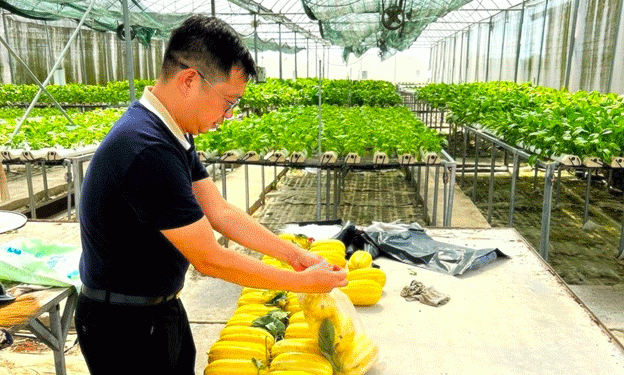This article explores how An Tâm Farm in Vietnam leverages smart agriculture technologies like IoT and hydroponics to dramatically increase crop yields. By combining traditional farming wisdom with cutting-edge automation, the farm has achieved remarkable efficiency, reduced costs, and ensured food safety.
In a time when food safety is a top concern for consumers, agricultural innovation is proving to be the key to balancing economic success and health standards. An Tâm Farm in Nghi Xuân, Vietnam, has successfully adopted smart agriculture technologies to solve the challenge of food safety while increasing productivity. Led by Võ Thành Tâm, the farm’s hydroponic vegetable production model on 1,000 square meters has become an industry benchmark, producing yields several times higher than traditional methods.
From Traditional to Smart: A Leap in Efficiency
Before adopting smart technology, growing vegetables on soil limited production to around 15 kg per day on a 500 m² plot. Through hydroponics, this has been elevated to 50 kg daily. The hydroponic system at An Tâm Farm employs two advanced techniques: recirculating hydroponics and drip irrigation, using Israeli technology. These methods not only optimize water usage but also ensure plants receive nutrients in a highly controlled environment.
The farm’s initial investment of 1.5 billion VND has resulted in two separate greenhouse zones of 500 m² each, where crops such as lettuce, spinach, tomatoes, cucumbers, and melons are grown. These are kept in ideal growing conditions, with nutrients, humidity, and ventilation all managed by automated systems.
IoT: Automation at the Heart of Farming
A crucial element in An Tâm Farm’s success is the application of Internet of Things (IoT) technology, with support from the Department of Science and Technology of Hà Tĩnh. The smart farming system enables remote monitoring and regulation of nutrient levels, pH, and moisture. This eliminates the variability inherent in manual cultivation and reduces the need for intensive labor. For instance, tasks like watering, nutrient delivery, and even controlling the greenhouse environment are automated through a central control unit. Adjustments can be made through a smartphone or tablet, with real-time data feeding into the system for precise decision-making.
Before implementing IoT, An Tâm Farm required 4-5 workers to handle manual tasks, such as nutrient mixing and irrigation. Now, with everything automated, only 1-2 workers are needed to manage the same workload, dramatically reducing labor costs while improving crop quality. Electricity and water costs have also been minimized, thanks to intelligent monitoring systems.
Yield and Profitability: Clear Advantages
The benefits of integrating IoT into hydroponic farming are clearly reflected in the yield figures. An Tâm Farm produces 14-16 tons of leafy greens per 1,000 m² annually, a 30% increase compared to conventional farming. Tomato yields range from 9.5 to 11.5 tons per 1,000 m², while cucumbers and Korean melons produce between 10 and 12 tons per 1,000 m², a 20% increase over traditional field farming.
Moreover, the farm’s products meet the highest food safety standards and are sold at premium prices in local markets, kindergartens, and even in the cities of Vinh and Hanoi. The farm is also certified under VietGAP (Vietnam Good Agricultural Practices), further bolstering its marketability and trust among consumers.
Challenges and the Path Forward
Despite the farm’s success, Võ Thành Tâm acknowledges the need for continued innovation to maintain competitiveness. Reducing production costs and finding stable market outlets remain challenges for the long-term sustainability of this smart farming model. However, with its strong technological foundation, An Tâm Farm is well-positioned to scale its operations, diversify crops, and further improve productivity.
An Tâm Farm’s experience demonstrates that by integrating IoT and hydroponic systems, farms can significantly increase productivity, lower costs, and improve food safety. The shift to smart farming is not just a trend but a necessity for future-proofing agriculture. As more farms embrace these technologies, the industry can expect to see enhanced efficiency, higher yields, and improved food quality.











